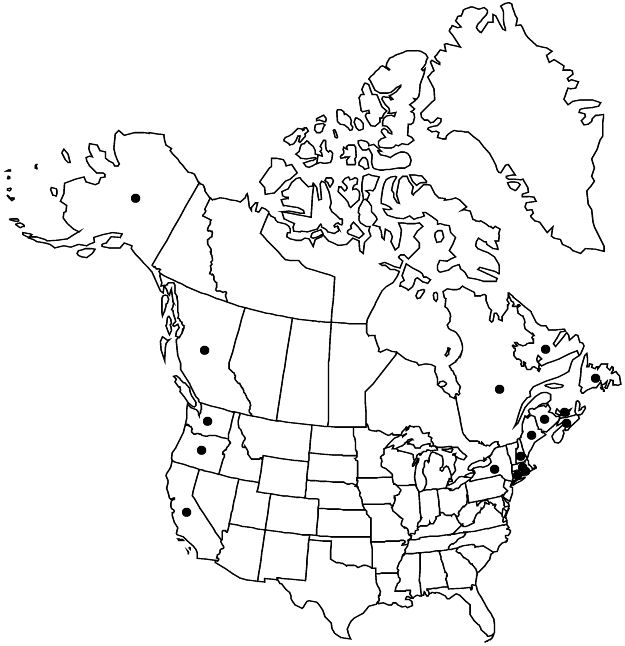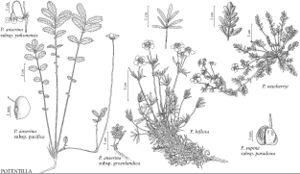Potentilla anserina subsp. pacifica
Ann. Bot. Fenn. 2: 104. 1965.
Stems glabrous or sparsely hairy. Leaves erect, rarely horizontal or ascending, (3–) 10–50 (–75) cm; leaflets (4–) 5–10 (–15) per side, separate, rarely overlapping, teeth (4–) 6–12 (–16) per side, teeth apex acute to acuminate, rarely subacute, surfaces: abaxial with long hairs absent or sparse, on veins, cottony-crisped hairs dense, adaxial glabrous, rarely sparsely to densely hairy. Flowers 1–2.5 (–3.5) cm diam.; epicalyx bractlets narrowly to broadly ovate-triangular, shorter than sepals, entire, rarely 2-fid or dentate; hypanthium patelliform (wider than deep) in fruit; petals not or rarely overlapping, elliptic; carpels (20–) 50–200 (–250). Achenes without dorsal groove. 2n = 28.
Phenology: Flowering summer.
Habitat: Salt and brackish marshes, clay and sandy seashores, maritime drift deposits
Elevation: 0–150 m
Distribution

B.C., N.B., Nfld. and Labr., N.S., P.E.I., Que., Alaska, Calif., Conn., Maine, Mass., N.H., N.Y., Oreg., R.I., Wash.
Discussion
Pacific and Atlantic populations of subsp. pacifica are widely separated geographically but are essentially the same morphologically, except for the high number of achenes in some west coast populations.
Selected References
None.
Lower Taxa
"thin" is not a number."(" is not declared as a valid unit of measurement for this property."dm" is not declared as a valid unit of measurement for this property."dm" is not declared as a valid unit of measurement for this property.
